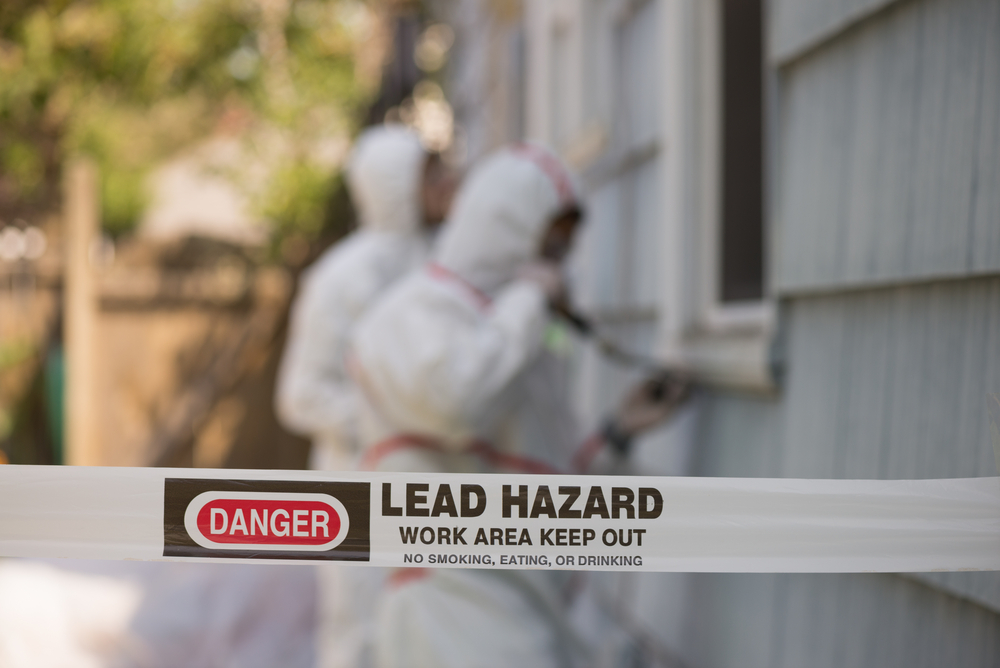The EPA is serious about compliance, especially when it comes to home renovations containing lead-based paint.
“Reducing childhood lead exposure and the associated health impacts is a top priority for EPA,” states an EPA news release. “That’s why EPA inspectors will be working actively in overburdened communities … to encourage greater compliance with the federal Lead Renovation, Repair and Painting (RRP) Rule.”
The Agency recently reached settlements with multiple home renovation companies, including several that are featured on popular HGTV shows. Collectively, these companies have been fined approximately $149,000.
The HGTV television shows are regularly viewed by more than 3 million households, and it is important for them to communicate safe renovation practices because “homeowners often rely on information from these shows to do their home improvement projects,” says EPA Environmental Engineer Christina Saldivar, according to WFYI.
As part of its settlement agreement, the host of one of the HGTV programs will produce a video about renovations involving lead-based paint. The company will also a create a social media video about protecting children from lead exposure.
In all cases, the EPA allegations included a failure to obtain EPA renovator certification and failure to assign a certified renovator before performing renovations.
Other violations differed among the companies, but common mistakes included:
- Ensuring all employees are trained in RRP Rule processes;
- Providing homeowners or occupants with an approved pamphlet about lead-based paint hazards before the renovation;
- Posting signs to clearly define the work area and warn people to remain outside that area; and
- Compliance with the RRP Rule’s work practice standards, such as closing doors and windows to interior work areas; covering floor surfaces, ducts, and other openings to work areas with plastic sheeting; and covering the ground with plastic sheeting to capture falling paint chips from exterior renovations.
“Lead can cause irreversible and life-long health effects, including decreasing IQ, focus, and academic achievement in children,” states the EPA settlement news release. “While lead is dangerous to all children, not all children are equally exposed to lead, nor do they suffer the same consequences of exposure. The harmful impacts of lead disproportionately impact environmentally overburdened, low-income families and their communities.”
The RRP Rule was created in 2008 and amended in 2010 and 2011. It requires companies performing renovation, repair, and painting projects that disturb lead-based paint in homes, childcare facilities, and preschools built before 1978 to be certified by the EPA (or an EPA-authorized state), use certified renovators who are trained by EPA-approved training providers, and follow lead-safe work practices.
“A key component of the final rule allows on-line training for every other recertification,” the EPA RRP website says. “Renovators who take the online training will be certified for three years; renovators who take the hands-on training will be certified for five years.”
Any activity that disturbs paint in pre-1978 housing and childcare facilities is covered by the RRP Rule, including:
- Remodeling and repair/maintenance
- Electrical work
- Plumbing
- Painting preparation
- Carpentry
- Window replacement
Although paint testing is not required by the RRP Rule, the regulations apply unless the paint is documented as being lead-free.
Activities exempt from the rule include:
- Housing built in 1978 or later.
- Housing specifically for elderly or disabled persons, unless children under 6 reside or are expected to reside there.
- “Zero-bedroom” dwellings (studio apartments, dormitories, etc.).
- Housing or components declared lead-free by a certified inspector or risk assessor. Also, a certified renovator may declare specific components lead-free using an EPA-recognized test kit or by collecting paint chip samples for analysis by an EPA-recognized laboratory.
- Minor repair and maintenance activities that disturb 6 square feet or less of paint per room inside or 20 square feet or less on the exterior of a home or building. (Note: Window replacement and partial and full demolition activities are always covered regardless of square footage. Activities designated as “prohibited” are prohibited regardless of square footage.)
To allow quick action in disaster recovery and cleanup, there is an emergency provision in the rule that exempts companies from certain requirements during specific circumstances.

